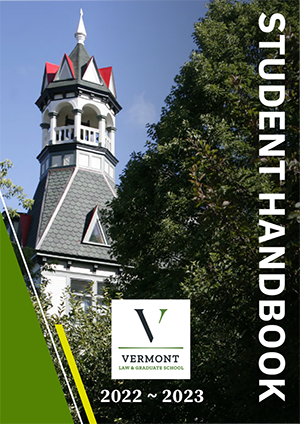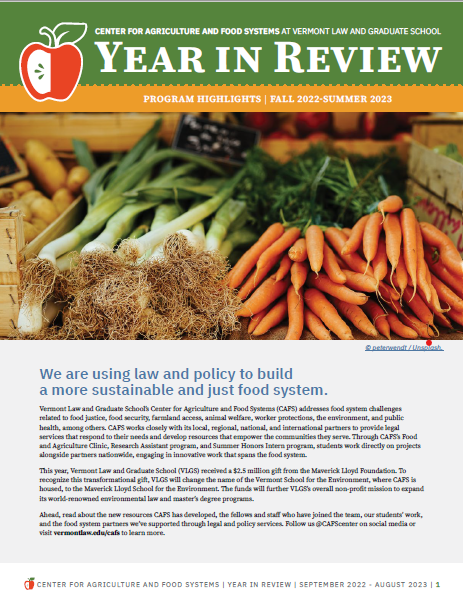Leak Detection and Repair
All reasonable precautions shall be taken to prevent particulate matter from becoming airborne.
Fugitive Emission Control/Fugitive Emission Control for Ozone Nonattainment Areas.
Requirements exist for process units at natural gas processing plants that contain any of the following components that operate in volatile organic compound (VOC) service for 300 hours or more during the calendar year: pumps; compressors; pressure relief devices; open-ended valves or lines; process drains; valves; agitators; systems; and connectors.
No component listed that is located at a natural gas processing plant shall be allowed to emit VOCs exceeding an instrument reading of
- 2,500 ppm for valves, connectors, systems, pressure relief devices, and process drains;
- 5,000 ppm for pumps and compressors, and
- 10,000 ppm for agitators,
as determined by Method 21. After initially complying by use of Method 21, the operator may elect to comply with the appropriate alternate monitoring. In lieu of Method 21 monitoring, optical imaging may be conducted in accordance with the AWP. If the operator elects to use the AWP, the requirements for instrument specifications shall be followed according to federal standards.
The operator shall make every reasonable effort to repair a leaking component within 15 calendar days of detection. A repair is considered successful if it meets any of the following conditions: a component is monitored to verify that the instrument reading is below the applicable leak; a component that has been identified as leaking using the AWP, a component that has been identified as leaking by visual or audible means and when visual or audible indications of the leak have been eliminated. Equipment that cannot be repaired shall be placed on a delay-of-repair list. Equipment on the delay-of-repair list shall be repaired by the end of the next scheduled process unit shutdown. The administrative authority reserves the right to take enforcement action should it be determined that the total percentage of components on the delay-of-repair list is excessive or is causing damage to the public health or environment. Equipment placed on the delay-of-repair list may be removed from the list if it meets any of the following conditions: the equipment is monitored or imaged, and for two consecutive monthly periods either the instrument readings are below the leak limitation or there are no visible emissions using an optical gas imaging instrument pursuant to the AWP; or the operator has undertaken additional efforts to repair the leaking equipment. Extraordinary efforts are non-routine repair methods or utilization of a closed-vent system to capture and control the leak by at least 90%.
Natural gas processing plants shall perform the following: inspect pump seals and compressor seals visually weekly; monitor the following components quarterly: pumps; compressor seals; valves; and pressure relief valves; inspect systems weekly by visual or audible means. As an alternative to weekly sensory inspections, monitor individual valves of the system; records of visual or audible inspections of systems are not required unless a leak is detected.
Facilities shall perform the following: Monitor any pressure relief valve within five calendar days after it has vented to the atmosphere. Difficult-to-monitor pressure relief valves shall be monitored within 15 calendar days and unsafe-to-monitor pressure relief valves shall be monitored as soon as possible; within five calendar days, any component identified as leaking by visual or audible means shall be: repaired; monitored, or designated as a leak; difficult-to-monitor components shall be monitored within 15 calendar days and unsafe-to-monitor components shall be monitored as soon as possible. Difficult-to-monitor valves shall be monitored annually; unsafe-to-monitor equipment shall be monitored as soon as possible. Equipment that replaces leaking equipment shall continue on the monitoring schedule for the equipment that it replaced; Monitoring to verify repairs that were made during a process unit shutdown shall occur by the end of the monitoring period in which the process unit start-up is completed, or 45 calendar days after the start-up period is completed, whichever is later.
Monitoring and inspections are not required on the following: check valves; pressure relief devices, pump seals and compressor seals where leaks are vented to a fuel gas system, or equipped with a closed-vent system capable of capturing and transporting leakage to a control device; pressure relief devices equipped with a rupture disc upstream of the pressure relief device; provided that after each pressure release, the rupture disc is replaced as soon as practicable; but not later than 15 calendar days; equipment at natural gas processing plants with less than 40 MM standard cubic feet per day rated capacity that do not fractionate natural gas liquids; components contacting only organic compounds or mixtures of same with water; pumps and compressors that are sealless or have a double mechanical seal; research and development facilities and small facilities with less than 100 valves; insulated or buried equipment; components that have been placed on a delay-of-repair list are exempt from further monitoring until a repair has been attempted, except that an operator may monitor components on the delay-of-repair list in order to remove equipment from the delay-of-repair list; process drains that are components of individual drain systems, and process drains at facilities.
Any facility that already has in place a fugitive emission monitoring program which controls emissions to a higher degree shall be exempted upon submittal of a description of the program to the administrative authority and approved thereof.
If a force majeure is about to occur, occurs, or has occurred for which the affected operator intends to assert a claim of force majeure, the operator shall notify the administrative authority as soon as practical following the date the operator first knew, or through due diligence should have known that the event may cause or has caused a delay in monitoring. The notification shall occur before the monitoring deadline unless the initial force majeure delays the notice, and in such cases, the notification shall occur as soon as practicable. The operator shall provide to the administrative authority a written description of the force majeure and a rationale for attributing the delay in monitoring; describe the measures taken or to be taken to minimize the delay; and identify a date by which the operator proposes to conduct the monitoring. The monitoring shall be conducted as soon as practicable after the force majeure occurs. The decision to grant an extension to the monitoring deadline is solely within the discretion of the administrative authority. The administrative authority shall notify the operator in writing of approval or disapproval of the request for an extension as soon as practical. Until an extension of the monitoring deadline has been approved by the administrative authority, the operator of the affected facility remains subject to the requirements.
Alternate Standards for Valves and Pumps. If the total percent of leaking and delay-of-repair components (Equation 1) is greater than 2.0, or the total percent of leaking and delay-of-repair valves (Equation 2) is greater than 4.0, then an increase in the frequency of monitoring may be required by the administrative authority.
When a component remains leaking after every reasonable attempt at repair within the 15-calendar day period has been exhausted, a weatherproof tag bearing an ID number and the date the leak was located shall be affixed to the leaking component. After the leak has been repaired, the tag may be removed. A survey log shall be maintained by the operator which shall include the following: the name of the process unit where the leaking component is located; the type of leaking component; the stream ID at the leak; the ID number from the tag; the date the leak was located; the date maintenance was performed; the date the component was rechecked after maintenance, and the results; a record of the monitor calibration or AWP daily instrument check; a delay-of-repair list; a bypassed or isolated component list; and a record of all inspection results. The operator shall retain the survey log for two years after the latest date and make the log available to the administrative authority upon request.
The operator of the facility shall submit a report semiannually to the Office of Environmental Services for each calendar quarter during the reporting period. The reports are due by the last day of the month following the monitoring period or by an alternate date approved by the administrative authority. The reports shall include the following information for each quarter of the reporting period: the number of each component type for which monitoring versus the number monitored and the total percent of leaking and delay-of-repair components (see Equation 1) for each component type for which alternate control techniques are allowed; and the total percent of leaking and delay-of-repair components (Equation 2) for each component type.
Venting and/or Flaring
The venting of natural gas from any well in Louisiana is prohibited unless the operator submits, and the Office of Conservation determines, that the inability to do so results in economic hardship. Such a finding cannot be made if the market value of the gas proposed to be vented exceeds the cost involved of making the gas available to market. L.A.C. § 43:XIX.3507. HOWEVER, this does not apply to horizontal wells. L.A.C. § 43:XIX:3509.
From Pipelines
Requires a permit that authorizes the operation of equipment necessary to test the content of a formation believed to contain natural gas. Such permit authorizes the release of natural gas from pipelines and associated equipment resulting from operations upon notification by the administrative authority that the application submitted has been determined to be complete. However, releases of less than 2.5 million cubic feet require no controls (measured at standard conditions). Releases greater than or equal to 2.5 MM cubic feet in volume shall be controlled by flaring, which must continue until less than 0.25 MM cubic feet of gas remains. Releases that will result in total VOC emissions of 5,000 pounds or more; benzene emissions equal to or exceeding its minimum emission rate (MER); or total benzene, toluene, ethylbenzene, and xylene emissions of 2,000 pounds or more shall be controlled by flaring, and it must continue until less than 0.25 MM cubic feet of gas remains. Natural gas releases covered by this regulatory permit shall have a H2S content of no more than 1.5 grains per 100 standard cubic feet.
The authorization for the testing addressed by the application shall remain effective for 60 days (well testing) and180 days (release of natural gas) following the date on which the administrative authority determines that the application is complete.
Operations of equipment beyond ten operating days shall not be authorized by this permit and must be approved separately by the administrative authority.
The following information shall be recorded and submitted to the Office of Environmental Services no later than 30 calendar days after completion of testing: The date(s) and duration of the testing event; the actual volumes of natural gas flared and natural gas released; and the actual criteria pollutant and TAP emissions associated with testing.
Exemptions may be granted by the administrative authority if flaring was not the result of failure to maintain or repair equipment. A report in writing, explaining the conditions and listing the steps necessary to remedy and prevent the excess emission, shall be submitted within seven calendar days of the occurrence. In addition, the flaring must be minimized and no air quality standard may be jeopardized.
The emission of smoke from a flare shall be controlled so that the shade or appearance of the emission does not exceed 20% opacity for a combined total of six hours in any ten consecutive days. If it appears an emergency cannot be controlled in six hours, it shall be notified by the emitter as soon as possible. Such notification does not imply the administrative authority will automatically grant an exemption to the source(s) of excessive emissions.

















